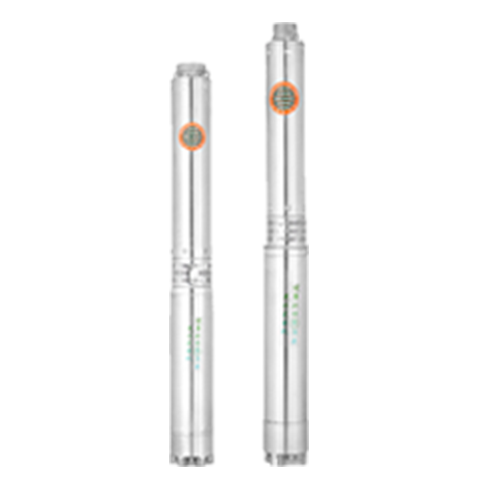Nov . 16, 2024 13:37 Back to list
submersible pump 220v 50hz
Understanding Submersible Pumps A Focus on 220V 50Hz Models
Submersible pumps are essential devices widely utilized in various applications, from residential drainage to agricultural irrigation and industrial processes. These pumps are designed to operate while submerged in the fluid they are pumping, which makes them particularly effective and efficient in a range of environments. Among the myriad of submersible pumps available in the market, those operating at 220V and 50Hz are notably prevalent in many regions.
What is a Submersible Pump?
A submersible pump is a type of centrifugal pump that is placed underwater. It consists of a sealed motor with a pump attached at the bottom. The motor is designed to run when submerged, pushing the water or liquid through the pump and out into the designated outlet. By being positioned underwater, these pumps eliminate the need for priming, making them ideal for deep well applications, flooded areas, and wastewater management.
Characteristics of 220V 50Hz Submersible Pumps
The designation of 220V and 50Hz refers to the electrical specifications typical in many countries, particularly in Europe and parts of Asia. The 220V indicates the voltage required to power the pump, while 50Hz denotes the frequency at which the electrical supply operates. This specification is important for ensuring compatibility with the local power supply and maximizing efficiency.
In terms of performance, 220V 50Hz submersible pumps are designed to deliver a significant amount of power without consuming excessive energy. This is particularly advantageous in agricultural settings where irrigation needs can fluctuate throughout the growing season. The high efficiency and reliability of these pumps make them suitable for moving large volumes of water smoothly and effectively.
Applications of 220V 50Hz Submersible Pumps
submersible pump 220v 50hz

1. Residential Use These pumps are frequently used for draining water from basements, swimming pools, or flooded areas. Homeowners appreciate their effectiveness and simplicity, often opting for automatic models that can operate independently when water levels rise.
2. Agricultural Irrigation Farmers rely on submersible pumps for irrigation, especially in regions where groundwater is the primary source for crops. These pumps can efficiently draw water from deep wells, providing a consistent supply necessary for various agricultural applications.
3. Wastewater Management Many municipal and industrial facilities deploy submersible pumps to handle wastewater. Their ability to handle solids and debris makes them ideal for sewage and wastewater treatment plants.
4. Construction Sites During construction activities, managing water accumulation is critical. Submersible pumps are often employed to remove water from excavated sites, preventing delays and ensuring a safe work environment.
Advantages of Submersible Pumps
Submersible pumps offer numerous advantages over other types of pumps. Their design allows them to operate quietly while submerged, which is crucial in residential applications. Moreover, they are less prone to cavitation, a condition that can damage other types of pumps when air enters the system. Additionally, the sealed construction protects the motor from water damage, extending the lifespan of the pump.
Conclusion
In conclusion, 220V 50Hz submersible pumps are invaluable tools in various sectors. Their efficient design, coupled with the appropriate voltage and frequency specifications, ensures that they meet the demands of both residential and industrial applications. As the global need for efficient water management continues to grow, these pumps will remain a vital component of modern infrastructure, catering to our ever-evolving needs for water resources. Investing in a quality submersible pump can enhance productivity and reliability, paving the way for efficient water usage in homes, farms, and industries alike.
-
Submersible Water Pump: The Efficient 'Power Pioneer' of the Underwater World
NewsJul.01,2025
-
Submersible Pond Pump: The Hidden Guardian of Water Landscape Ecology
NewsJul.01,2025
-
Stainless Well Pump: A Reliable and Durable Pumping Main Force
NewsJul.01,2025
-
Stainless Steel Submersible Pump: An Efficient and Versatile Tool for Underwater Operations
NewsJul.01,2025
-
Deep Well Submersible Pump: An Efficient 'Sucker' of Groundwater Sources
NewsJul.01,2025
-
Deep Water Well Pump: An Efficient 'Sucker' of Groundwater Sources
NewsJul.01,2025
-
 Submersible Water Pump: The Efficient 'Power Pioneer' of the Underwater WorldIn the field of hydraulic equipment, the Submersible Water Pump has become the core equipment for underwater operations and water resource transportation due to its unique design and excellent performance.Detail
Submersible Water Pump: The Efficient 'Power Pioneer' of the Underwater WorldIn the field of hydraulic equipment, the Submersible Water Pump has become the core equipment for underwater operations and water resource transportation due to its unique design and excellent performance.Detail -
 Submersible Pond Pump: The Hidden Guardian of Water Landscape EcologyIn courtyard landscapes, ecological ponds, and even small-scale water conservancy projects, there is a silent yet indispensable equipment - the Submersible Pond Pump.Detail
Submersible Pond Pump: The Hidden Guardian of Water Landscape EcologyIn courtyard landscapes, ecological ponds, and even small-scale water conservancy projects, there is a silent yet indispensable equipment - the Submersible Pond Pump.Detail -
 Stainless Well Pump: A Reliable and Durable Pumping Main ForceIn the field of water resource transportation, Stainless Well Pump has become the core equipment for various pumping scenarios with its excellent performance and reliable quality.Detail
Stainless Well Pump: A Reliable and Durable Pumping Main ForceIn the field of water resource transportation, Stainless Well Pump has become the core equipment for various pumping scenarios with its excellent performance and reliable quality.Detail
